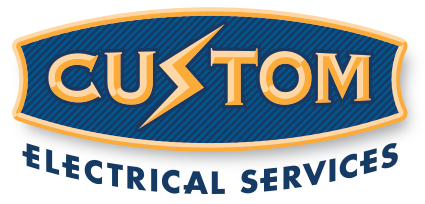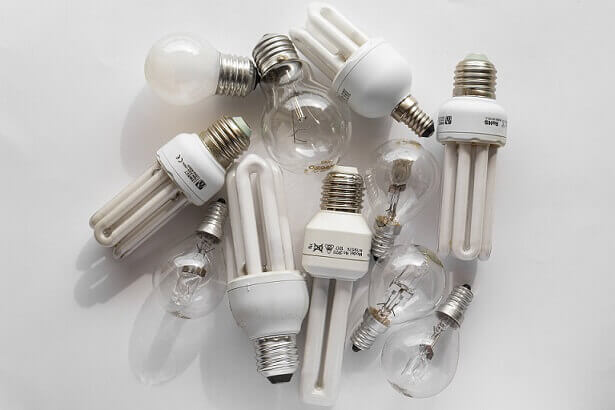Decoding Different Kinds of Light Bulbs
New lighting standards phased in from 2012- 2014 to use less energy than traditional light bulbs. Traditional incandescent light bulbs used a lot of energy. New energy-saving light bulbs could save you money – about $50/year if you replace 15 bulbs. Understanding the different types of bulbs available can help guide you when purchasing.
Halogen Incandescents
Halogen bulbs have a tungsten filament just like incandescent bulbs but halogen bulbs are also filled with gas. A capsule holds gas around the filament and when the bulb is lit, tungsten from the filament evaporates gas into the bulb providing illumination. Particles burning off the tungsten filament are then redeposited back onto the filament by the halogen inside the quartz capsule, allowing for these particles to be “reused.” This creates lower energy use for the bulb.
Pros: Quality of light, dimming capability, low cost, illuminate instantly with no time required to “warm” up.
Cons: Not as efficient as CFLs or LEDs, run hot and can cause burns if touched, should be kept away from flammable materials.
Best for: Outdoors where bright light is needed or office lamps.
Compact Fluorescent Lamps (CFLs)
CFLs are curly versions of the long fluorescent lights you’ve often seen overhead. They are lit when an electric current is driven through a tube creating a small amount of mercury vapor. The mercury atoms produce ultraviolet (UV) light, which in turn causes the phosphors in the lamp to fluoresce or glow, producing visible light.
Pros: More energy efficient using up to 75% less energy than incandescent bulbs, reduces carbon dioxide emissions.
Cons: Contain a small amount of mercury and should always be recycled, can produce harsh light that isn’t easy on the eyes, takes about 10-30 seconds to heat up to their maximum brightness, doesn’t work well with dimmers or timers (unless otherwise stated on packaging), sensitive to temperature.
Best for: Areas where lights need to be on for long periods of time.
Light Emitting Diodes (LEDs)
LED light bulbs become illuminated by the movement of electrons through a semiconductor material that converts electricity to light.
Pros: Use up to 75% less energy than incandescent bulbs, longest-lasting, most energy-efficient lighting available today, brightens instantly with no warm-up time, cool to the touch, sturdier, and less likely to break.
Cons: Higher upfront costs, some bulbs may not be compatible with dimmers, most light only in one direction rather than illuminating in all directions.
Best for: virtually anywhere! Check out our guide on outdoor LED lighting.
The Iowa Be Bright program is offering savings to Iowa residents switching to LED lights. Until December 31, 2021, participating Iowa electric utilities are helping residents make the simple switch to energy-efficient lighting by offering special pricing on ENERGY STAR® qualified LED bulb purchases of 12 or less.
When shopping for new types of light bulbs, understanding brightness, power, and lifespan can help you decide on which bulbs to purchase. Choosing the right light colors for your space is important as well.
Brightness
A light bulb’s brightness is measured in lumens. The higher the lumen number the brighter the light will be.
Power
The power of a light bulb is measured in wattage. The higher the wattage the more energy the bulb uses to emit light. The more energy a light bulb uses the higher the cost.
Lifespan
LED lights can last up to 34 years without having to change the light bulb. A traditional incandescent bulb will last on average for 1.4 years.
Save further by installing controls such as timers to turn off when not in use or dimmers that can use less energy when you turn the brightness down on the light. Our team can help with the installation of controls for your lights.
If you’re looking to upgrade your lighting or want to install new light fixtures, contact us to book an appointment in Iowa with one of our qualified electricians.
Image by Christos Giakkas from Pixabay



